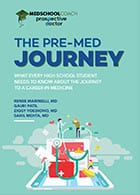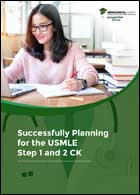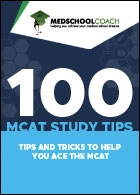In January 2021, the USMLE Step 2 Clinical Skills (CS) test for medical school students and graduates was permanently canceled. Here’s what this means to students.
The US Medical Licensing Examination (USMLE) co-sponsors, the Federation of State Medical Boards (FSMB) and the National Board of Medical Examiners (NBME), made the announcement to cancel Step 2 CS.
COVID-19 Initially Suspended the Step 2 CS
Back in 2020, COVID-19 initially forced a suspension of the test, as it requires test takers to interact with physical contact with patients. The exam is designed to determine how future doctors gather information from patients, perform physical exams, and communicate their findings to patients and colleagues.
The Step 2 CS Suspension Is Now Indefinite
The USMLE Step 2 CS cancellation is now permanent.
According to Medscape, there is no plan to bring back Step 2 CS. Instead, they will focus on working with colleagues in medical education and at the state medical boards to determine innovative ways to assess clinical skills.
David Johnson, FSMB’s chief assessment officer, told Medscape that after months of study, “It became clear that the relaunch of a modified Step 2 CS exam would not meet our expectations to be appreciably better than the prior exam.”
The USMLE still believes independent standardized tests for medical knowledge and clinical skills are important. However, it now feels clinical reasoning and communication skills will be able to be assessed in other steps.
As stated in their announcement, “Computer-based case simulations in Step 3 and communication content recently bolstered in Step 1 are examples of these efforts that will continue. While not a replacement for Step 2 CS, these formats continue to contribute positively, e.g., measuring critical knowledge of medical communication.”
What the Step 2 CS Cancelation Means for Medical Students
Becoming a Physician Just Became a Little Lest Expensive
Dr. Joel Ramirez is the Director of Medical School Tutoring at MedSchoolCoach and had this to say: “Step 2 CS is cancelled! Every medical student’s bank account can celebrate! Given the high pass rates of this exam and the high cost and requirement to travel to a regional testing center, it has come under a lot of scrutiny recently. The cost to travel and take the exam can easily exceed $2,000, which can be a significant drain to medical students who are already hundreds of thousands of dollars in debt.”
Caribbean and IMG Students May Face Challenges
Although cancelling Step 2 CS is likely a good thing for most students, it may present additional challenges for Caribbean university graduates and international medical graduates.
Dr. Ramirez added: “Some residency program directors utilized the exam as a standardized way to ensure that residency applicants were clinically adept, regardless of where they trained or went to school. With Step 1 becoming pass/fail in 2021 and Step 2 CS now cancelled, it seems like students and international medical graduates will rely solely on their Step 2 CK scores to demonstrate their knowledge, clinical acumen, and ability to learn, interpret, and apply a vast body of knowledge. This now makes Step 2 CK an incredibly high pressure exam with no margin for error. The good news is that means all of your effort, time, and resources can be focused on performing well on one exam, rather than multiple exams.”
Tutoring Can Help Medical Students Match Into Residency
MedSchoolCoach tutors are expert educators who have a demonstrated history of successful outcomes, particularly for students taking Step 2 CK. Students who are most successful on Step 2 CK have excelled throughout their clinical year and on all of their shelf exams.
Students who work with MedSchoolCoach tutors during their clinical year to get help with their shelf exams, and ultimately Step 2 CK, have experienced impressive outcomes and success. With only one exam to focus on, make sure that you give it your all and get help from the best!






